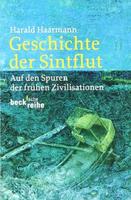Subject

photo credits: Wikimedia Commons
The Vinča culture (ʋîːntʃa), also known as Turdaș culture, Turdaș–Vinča culture or Vinča-Turdaș culture, is a Neolithic archaeological culture of Southeast Europe, dated to the period 5400–4500 BC. Named for its type site, Vinča-Belo Brdo, a large tell settlement discovered by Serbian archaeologist Miloje Vasić in 1908, it represents the material remains of a prehistoric society mainly distinguished by its settlement pattern and ritual behaviour. Farming technology first introduced to the region during the First Temperate Neolithic was developed further by the Vinča culture. It was noted for dark-burnished pottery, and fuelling a population boom and producing some of the largest settlements in prehistoric Europe. These settlements maintained a high degree of cultural uniformity through the long-distance exchange of ritual items, but were probably not politically unified. Various styles of zoomorphic and anthropomorphic figurines are hallmarks of the culture, as are the Vinča symbols, which some conjecture to be the earliest form of proto-writing. Although not conventionally considered part of the Chalcolithic or "Copper Age", the Vinča culture provides the earliest known example of copper smelting in the Old World. Source: Wikipedia (en)
Works about Vinča culture 2
Subject - wd:Q831336

